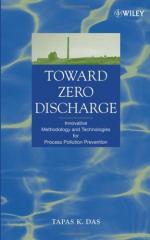|
This section contains 200 words (approx. 1 page at 300 words per page) |
Zero discharge is the goal of eliminating discharges of pollutants by industry, government, and other agencies to air, water, and land with a view to protect both public health and the integrity of the environment. Such a goal is difficult to achieve except where there are point sources of pollution, and even then the cost of removing the last few percent of a given pollutant may be prohibitive. However, the goal is attainable in many specific cases (e.g., the electroplating industry), and is particularly urgent in the case of extremely toxic pollutants such as plutonium and dioxins. In other cases, it may be desirable as a goal even though it is not likely to be completely attained.
 Zebras and wildebeasts at Ngorongoro Crater, Serengeti National Park, Tanzania. (Photograph by Carolina Biological Supplies. Phototake. Reproduced by permission.)
Zebras and wildebeasts at Ngorongoro Crater, Serengeti National Park, Tanzania. (Photograph by Carolina Biological Supplies. Phototake. Reproduced by permission.)
Zero discharge was actually proposed in the early 1970s by the United States Senate as an attainable goal for the Federal Water Pollution Control Acts Amendments of 1972. However, industry, the White House, and other branches of government lobbied intensely against it, and the proposal did not survive the legislative process.
See Also
Air Quality Criteria; Pollution Control; Water Quality Standards
|
This section contains 200 words (approx. 1 page at 300 words per page) |


